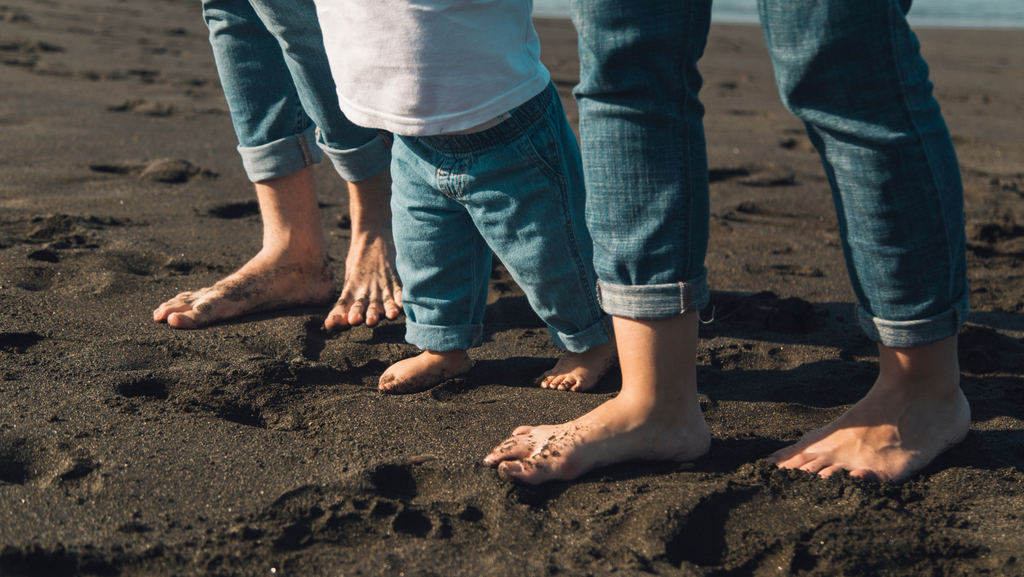A baby’s feet are soft and pink, with tiny straight toes - too cute! A newborn’s feet have a lot of fatty tissue, which later changes into bones. When you hold a baby under his arms and let him stand gently on a surface, he moves his legs as if he’s walking. This “stepping reflex” is already programmed into the baby’s body at birth and disappears within 6 weeks.
In this article we'll look at the different stages of foot development that your child will go through, and ways you can help your child’s foot development and aid in the ability to walk:
Newborn babies (0-3 months old)
Your baby's feet are still quite flat, and they may have trouble standing on them as they're small and the leg and thigh muscles are still undergoing development. Their toes will also be curled up towards their body because they are still tender and sensitive at this stage. Also, their arches aren't developed yet so you won't see any bumps on the bottom of their feet at this point in time either.
Infants (4-6 months old)
At four to six months old, your baby should be able to stand confidently on both feet with little support from you and anyone else around them. They may need some help balancing themselves at first but over time they'll get better at it as they get stronger muscles in their legs and feet. It’s likely you’ll see the little one’s face light up when they are trying their best to balance! With some practice and time, they’ll be keeping you on your toes!
Becoming a toddler (6-12 months old)
Most babies learn to walk between the ages of 9 and 18 months. Some take their first steps before others, and their feet develop at different rates. Babies often display abnormal walking stances at first—such as out-toeing or tiptoeing—but these stances usually disappear as they master their walking skills. If any stance persists beyond an acceptable time frame, then it's time to consult a paediatrician.
How can you help your little one’s foot development?
Allow the feet to develop as naturally as possible by letting them spend time without shoes every day so they can exercise the muscles in their feet.
Tickle the toes to encourage the feet to flex and move, developing flexibility and strengthening the muscle.
Socks or tights made from cotton, or a cotton and wool mix, will keep your toddler's feet warm while giving them room to develop. Regularly check that they are wearing the right size, especially if you tumble dry them. Socks can shrink, and if they're too tight, can restrict how your child’s feet grow.
Even if your little one isn't walking yet, make sure that any soft booties they wear also have lots of room for the toes to move.
What are the alternatives to baby shoes?
Our signature bootie collection is made by hand specifically for developing feet, a 100% organic construction ensures they contain no allergens that can harm your child and the adjustable strap allows for adjustment as the feet grow and change.
The 100% organic cotton construction of this bootie makes it breathable, flexible, and comfortable. Also, there's an adjustable strap across the bridge of the foot that allows for extra room as your little one grows and stretches the bootie.
Our booties are available in three sizes, 0 – 3 months, 3 – 6 months and 6 – 9 months.
Choose from a wide range of gender-neutral and unisex colours for every occasion.
If you have any questions regarding our booties please contact us for further information, alternatively, check out our blogs on how to keep your baby cool in the summer & The advantages of breastfeeding your baby.

